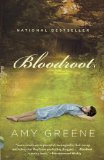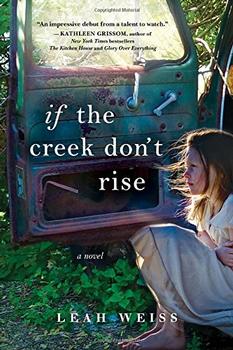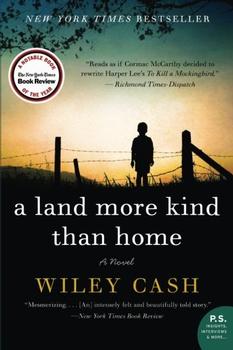Summary | Excerpt | Reading Guide | Reviews | Beyond the book | Read-Alikes | Genres & Themes | Author Bio

Bloodroot presents a range of voices by weaving together narratives from Myra Lamb's family. Author Amy Greene prevents the narratives from sprawling like kudzu by organizing them into paired sections, allowing characters to alternate speaking in groups of two. The result is a dynamic, layered effect that allows the reader to sink progressively deeper into the Lamb family, as opposed to the traditional approach of going forward through a linear plot progression. Bloodroot still contains a careful, precise plot, but that structure does not become fully apparent until the final pages of the novel.
Greene opens her stories quietly, depicting her characters in moments of reflection and pause, asking her readers to wait for the action that promises to be delivered at a later time. For the first half of the novel Greene asks for a great deal of patience from the reader, but what begins softly and slowly with a plethora of characters and identities gradually morphs into a fast, jarring duel between a precious few. This dramatic peak solidifies the few characters who are left, making them brighter and more dynamic when compared to their counterparts that began the novel. The Lamb family's memories of Myra prelude Myra's conflict, and this slow uncovering both tantalizes and torments the reader.
Each narrator tells a tale that could stand on its own as a short story or novella. Greene - and all of her protagonists - have a penchant for the hazy, vernal beauty of Appalachian summer that she gently depicts through lines like "Myra sounded sleepy, drunk on the feel of the creek lapping at her fingers, running like a cool scarf over her elbow bends, gliding under her heels and between her toes, and all the smells of the blossoms and muck and mottled toadstools risen like yeast in the shade." When the narrative diverges into the darker history of the characters the summer beauty is shoved aside for austerity, resulting in what feels like almost a different writer with a new interest and purpose. Villains appear, the bucolic background fades, and weddings are replaced with tumult. The reader has two versions of Millertown, Tennessee and Bloodroot Mountain: one of ecological grace and one of economic disparity. Greene shows the fascinating intersection between the mountainous beauty and "the whiskey bottles and charred cigarette butts littering the gulley alongside the tracks" that also pervades early twentieth century Appalachia.
In terms of literary heritage, there is a slight effort to echo William Wordsworth,
particularly "Lines
Composed a Few Miles above Tintern Abbey." While stylistic parallels to Wordsworth's
daffodils are evident throughout the novel, Greene's characters function with
independence and resolution that bring the American transcendentalists - Emerson,
Thoreau - more readily to mind. Bloodroot works at a slower, heavier pace
than Fannie Flagg's Fried Green Tomatoes or Rebecca Wells' Divine Secrets
of the Ya-Ya Sisterhood. Readers who enjoyed Charles Frazier's Cold
Mountain will likely find pleasure in Bloodroot's pages.
![]() This review was originally published in The BookBrowse Review in February 2010, and has been updated for the
January 2011 edition.
Click here to go to this issue.
This review was originally published in The BookBrowse Review in February 2010, and has been updated for the
January 2011 edition.
Click here to go to this issue.

If you liked Bloodroot, try these:

by Leah Weiss
Published 2017
With a colorful cast of characters that each contribute a new perspective, If The Creek Don't Rise is a debut novel bursting with heart, honesty, and homegrown grit.

by Wiley Cash
Published 2013
A mesmerizing literary thriller about the bond between two brothers and the evil they face in a small western North Carolina town.
Your guide toexceptional books
BookBrowse seeks out and recommends the best in contemporary fiction and nonfiction—books that not only engage and entertain but also deepen our understanding of ourselves and the world around us.